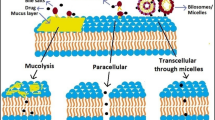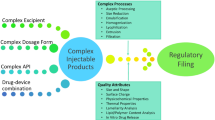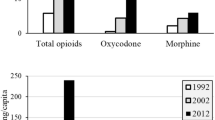ABSTRACT
Purpose
Since the absorption of ceftriaxone (CTO) in the intestine is restricted by its natural physiological characteristics, we developed a series of small synthetic compounds derived from bile acids to promote the absorption of CTO in the gastrointestinal tract.
Methods
Several bile acid derivatives were screened by measuring water solubility and partition coefficient of their complexes with CTO. The pharmacokinetic parameters of the selected CTO/HDCK ionic complex in monkeys were evaluated. The absorption pathway of CTO/HDCK complex was evaluated using Caco-2 cells and MDCK cells transfected with ASBT gene.
Results
HDCK enhanced the apparent membrane permeability of CTO 5.8-fold in the parallel artificial membrane permeability assay model. CTO/HDCK complex permeated Caco-2 cell via transcellular pathway, and interaction of the HDCK complex with ASBT was important to enhance uptake. When CTO/HDCK (equivalent to 50 mg/kg of ceftriaxone) formulated with lactose, poloxamer 407 and Labrasol was orally administered to monkeys, its maximum plasma concentration was 19.5 ± 1.8 μg/ml and oral bioavailability 28.5 ± 3.1%.
Conclusions
The CTO/HDCK formulation could enhance oral bioavailability of CTO in non-human primates. This oral formulation could be an alternative to injectable CTO with enhanced clinical effects.






Similar content being viewed by others
Abbreviations
- ASBT:
-
apical sodium bile acid transporter
- AUC:
-
area under the curve
- Cmax :
-
the maximum plasma concentration
- CTO:
-
sodium ceftriaxone
- DAPI:
-
4,6-diamidino-2-phenylindole
- DOCA:
-
deoxycholic acid
- HDCK:
-
an oral drug carrier derived from deoxycholic acid
- HPMCP:
-
hydroxypropyl methylcellulose phthalate
- IVF:
-
in vitro fertilization
- KRICT:
-
Korea Research Institute of Chemical Technology
- MDCK:
-
Madin-Darby canine kidney
- PAMPA:
-
parallel artificial membrane permeability assay
- THF:
-
tetrahydrofuran
- Tmax :
-
the time to reach the peak concentration
REFERENCES
Dawson PA, Lan T, Rao A. Bile acid transporters. J Lipid Res. 2009;50(12):2340–57.
Balakrishnan A, Polli JE. Apical sodium dependent bile acid transporter (ASBT, SLC10A2): a potential prodrug target. Mol Pharm. 2006;3(3):223–30.
Mesiha MS, Ponnapula S, Plakogiannis F. Oral absorption of insulin encapsulated in artificial chyles of bile salts, palmitic acid and alpha-tocopherol dispersions. Int J Pharm. 2002;249(1–2):1–5.
Oreilly JR, Corrigan OI, Odriscoll CM. The effect of mixed micellar systems, bile-salt fatty-acids, on the solubility and intestinal-absorption of clofazimine (B663) in the anesthetized rat. Int J Pharm. 1994;109(2):147–54.
Lillienau J, Schteingart CD, Hofmann AF. Physicochemical and physiological-properties of cholylsarcosine - a potential replacement detergent for bile-acid deficiency states in the small-intestine. J Clin Invest. 1992;89(2):420–31.
Michael S, Thole M, Dillmann R, Fahr A, Drewe J, Fricker G. Improvement of intestinal peptide absorption by a synthetic bile acid derivative, cholylsarcosine. Eur J Pharm Sci. 2000;10(2):133–40.
Tolle-Sander S, Lentz KA, Maeda DY, Coop A, Polli JE. Increased acyclovir oral bioavailability via a bile acid conjugate. Mol Pharm. 2004;1(1):40–8.
Kim SK, Lee S, Jin S, Moon HT, Jeon OC, Lee DY, et al. Diabetes correction in pancreatectomized canines by orally absorbable insulin-deoxycholate complex. Mol Pharm. 2010;7(3):708–17.
Lee S, Lee J, Lee DY, Kim SK, Lee Y, Byun Y. A new drug carrier, N-alpha-deoxycholyl-L-lysyl-methylester, for enhancing insulin absorption in the intestine. Diabetologia. 2005;48(3):405–11.
Lee Y, Nam JH, Shin HC, Byun Y. Conjugation of low-molecular-weight heparin and deoxycholic acid for the development of a new oral anticoagulant agent. Circulation. 2001;104(25):3116–20.
Kim SK, Lee DY, Lee E, Lee YK, Kim CY, Moon HT, et al. Absorption study of deoxycholic acid-heparin conjugate as a new form of oral anti-coagulant. J Controlled Release. 2007;120(1–2):4–10.
Lee DY, Lee J, Lee S, Kim SK, Byun Y. Liphophilic complexation of heparin based on bile acid for oral delivery. J Controlled Release. 2007;123(1):39–45.
Richards DM, Heel RC, Brogden RN, Speight TM, Avery GS. Ceftriaxone - a review of its antibacterial activity, pharmacological properties and therapeutic use. Drugs. 1984;27(6):469–527.
Beam TR, Polk R, Barriere SL. Ceftriaxone - a beta-lactamase stable, broad-spectrum cephalosporin with an extended half-life. Pharmacotherapy. 1985;5(5):237–53.
Balant L, Dayer P, Auckenthaler R. Clinical pharmacokinetics of the third generation cephalosporins. Clin Pharmacokinet. 1985;10(2):101–43.
Meyers BR, Srulevitch ES, Jacobson J, Hirschman SZ. Crossover study of the pharmacokinetics of ceftriaxone administered intravenously or intramuscularly to healthy-volunteers. Antimicrob Agents Ch. 1983;24(5):812–4.
Hendrickson JR, North DS. Pharmacoeconomic benefit of antibiotic step-down therapy - converting patients from intravenous ceftriaxone to oral cefpodoxime proxetil. Ann Pharmacother. 1995;29(6):561–5.
Harrington Z, Barnes DJ. One drug or two? Step-down therapy after i.v. antibiotics for community-acquired pneumonia. Intern Med J. 2007;37(11):767–71.
Jewesson P. Cost-effectiveness and value of an IV switch. PharmacoEconomics. 1994;5 Suppl 2:20–6.
Sevinc F, Prins JM, Koopmans RP, Langendijk PN, Bossuyt PM, Dankert J, et al. Early switch from intravenous to oral antibiotics: guidelines and implementation in a large teaching hospital. J Antimicrob Chemother. 1999;43(4):601–6.
Lee S, Kim SK, Lee DY, Chae SY, Byun Y. Pharmacokinetics of a new, orally available ceftriaxone formulation in physical complexation with a cationic analogue of bile acid in rats. Antimicrob Agents Ch. 2006;50(5):1869–71.
Beskid G, Unowsky J, Behl CR, Siebelist J, Tossounian JL, Mcgarry CM, et al. Enteral, oral, and rectal absorption of ceftriaxone using glyceride enhancers. Chemotherapy. 1988;34(2):77–84.
Cho SW, Lee JS, Choi SH. Enhanced oral bioavailability of poorly absorbed drugs. I. Screening of absorption carrier for the ceftriaxone complex. J Pharm Sci. 2004;93(3):612–20.
Attama AA, Okafor CE, Builders PF, Okorie O. Formulation and in vitro evaluation of a PEGylated microscopic lipospheres delivery system for ceftriaxone sodium. Drug Deliv. 2009;16(8):448–57.
Lee S, Kim SK, Lee DY, Park K, Kumar TS, Chae SY, et al. Cationic analog of deoxycholate as an oral delivery carrier for ceftriaxone. J Pharm Sci. 2005;94(11):2541–8.
Chen XX, Murawski A, Patel K, Crespi CL, Balimane PV. A novel design of artificial membrane for improving the PAMPA model. Pharm Res. 2008;25(7):1511–20.
Balakrishnan A, Sussman DJ, Polli JE. Development of stably transfected monolayer overexpressing the human apical sodium-dependent bile acid transporter (hASBT). Pharm Res. 2005;22(8):1269–U13.
Charkoftaki G, Dokoumetzidis A, Valsami G, Macheras P. Elucidating the role of dose in the biopharmaceutics classification of drugs: the concepts of critical dose, effective in vivo solubility, and dose-dependent BCS. Pharm Res. 2012;29(11):3188–98.
Craig WA. Interrelationship between pharmacokinetics and pharmacodynamics in determining dosage regimens for broad-spectrum cephalosporins. Diagn Micr Infec Dis. 1995;22(1–2):89–96.
Garot D, Respaud R, Lanotte P, Simon N, Mercier E, Ehrmann S, et al. Population pharmacokinetics of ceftriaxone in critically ill septic patients: a reappraisal. Brit J Clin Pharmaco. 2011;72(5):758–67.
ACKNOWLEDGMENTS AND DISCLOSURES
Ok-Cheol Jeon and Seung Rim Hwang contributed equally to this work. This study was supported by the Converging Research Center Program (grant no. 2012K001398) and the World Class University (WCU) program (grant no. R31-2008-000-10103-0) of the National Research Foundation of Korea (NRF), which is funded by the Ministry of Education, Science and Technology in Korea.
Author information
Authors and Affiliations
Corresponding authors
Rights and permissions
About this article
Cite this article
Jeon, OC., Hwang, S.R., Al-Hilal, T.A. et al. Oral Delivery of Ionic Complex of Ceftriaxone with Bile Acid Derivative in Non-human Primates. Pharm Res 30, 959–967 (2013). https://doi.org/10.1007/s11095-012-0932-0
Received:
Accepted:
Published:
Issue Date:
DOI: https://doi.org/10.1007/s11095-012-0932-0




